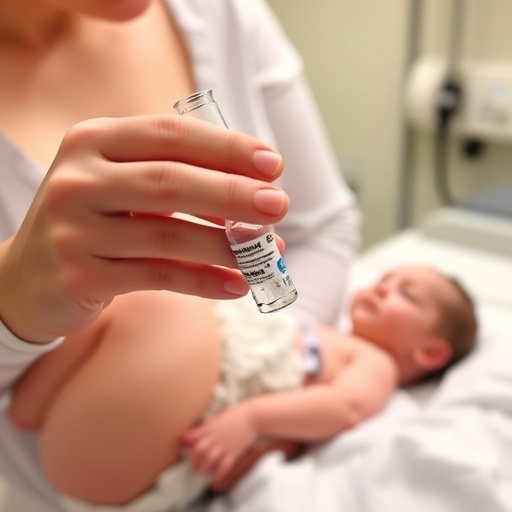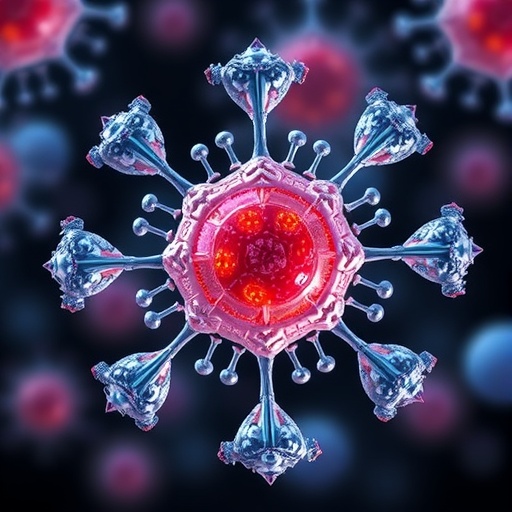In recent years, the management of respiratory distress syndrome (RDS) in preterm infants has undergone a remarkable transformation, driven by advances in surfactant therapy and novel delivery methods. At the forefront of these innovations is less-invasive surfactant administration (LISA), a technique that has captured the attention of neonatologists worldwide due to its ability to deliver surfactant without the need for intubation or mechanical ventilation. This paradigm shift is revolutionizing neonatal care by minimizing lung injury and improving long-term respiratory outcomes across a vulnerable patient population.
LISA represents a significant departure from traditional surfactant delivery methods that relied heavily on endotracheal intubation and positive pressure ventilation. By employing a thin catheter to administer surfactant directly into the trachea of spontaneously breathing infants, LISA maintains the infant’s natural respiratory efforts while circumventing the potential harms associated with mechanical ventilation. This method supports the infant’s own breathing and preserves noninvasive continuous positive airway pressure (CPAP) throughout the procedure. The clinical impact of this approach has been extensively documented, demonstrating both safety and efficacy in various multicenter trials and registries.
The science behind LISA’s success lies in its ability to mitigate ventilator-associated lung injury, a common complication in preterm infants with immature lungs. When positive pressure ventilation is applied via endotracheal tubes, it can exacerbate inflammation and disrupt delicate alveolar structures. LISA avoids this by enabling surfactant administration without cessation of spontaneous breathing or application of pressure-controlled ventilation. Consequently, it reduces the incidence of bronchopulmonary dysplasia (BPD), a chronic lung disease that significantly contributes to neonatal morbidity and mortality.
Multiple landmark studies have substantiated the benefits of LISA. Early randomized controlled trials conducted by the German Neonatal Network revealed that the technique lowered the need for mechanical ventilation compared to conventional therapy. These findings were subsequently reinforced in a large-scale, international trial, which confirmed that infants treated with LISA experienced fewer days on ventilatory support and a lower risk of BPD, without increased adverse effects. Such robust clinical evidence has solidified LISA’s position as a frontline intervention for surfactant delivery in preterm neonates.
Despite the promising results, widespread adoption of LISA required overcoming technical and educational barriers. Administering surfactant via a thin catheter in a spontaneously breathing infant demands exceptional skill and familiarity with the procedure. Neonatal intensive care units worldwide have since integrated comprehensive training programs, ensuring clinicians are equipped to perform the technique safely and efficiently. Moreover, ongoing refinements in catheter design have facilitated smoother insertion and reduced procedure-related complications, further advancing LISA’s clinical implementation.
The physiological principles underpinning LISA also highlight the importance of maintaining natural respiratory drive. By preserving the infant’s own respiratory rhythm during surfactant administration, LISA avoids the hemodynamic fluctuations and airway trauma frequently associated with intubation. This approach optimizes endogenous lung expansion and surfactant distribution, fostering rapid improvement in functional residual capacity and gas exchange. Additionally, it allows for a seamless transition to noninvasive respiratory support, which has been linked to improved neurodevelopmental outcomes.
Current research is expanding beyond immediate respiratory effects to explore how LISA interacts with prophylactic surfactant strategies. Historically, prophylactic surfactant therapy was administered shortly after birth to preterm infants deemed at high risk, often necessitating intubation. The advent of LISA challenges this paradigm by enabling prophylactic administration with minimal invasiveness, thereby combining the preventive benefits of early surfactant replacement with the safety profile of noninvasive methods. Ongoing trials are assessing whether prophylactic LISA can further reduce respiratory complications and enhance survival rates among extremely preterm populations.
Another intriguing aspect of less-invasive surfactant delivery is its potential impact on global neonatal care. In diverse healthcare settings, particularly in low- and middle-income countries, minimizing invasive procedures and harnessing affordable noninvasive respiratory support modalities represent critical goals. LISA aligns with these objectives by simplifying surfactant administration and potentially reducing the need for costly and complex ventilatory equipment. As such, it holds promise for democratizing access to advanced neonatal therapies and improving outcomes worldwide.
The application of LISA is not without challenges. Patient selection criteria remain an active area of investigation, as determining which infants will benefit most from this technique requires careful assessment of respiratory effort, gestational age, and disease severity. Furthermore, while LISA reduces ventilator-induced lung injury, it is not a panacea for all preterm respiratory complications. Clinicians must remain vigilant for cases where escalation to mechanical ventilation becomes necessary, ensuring that surfactant delivery complements rather than replaces comprehensive respiratory management.
Beyond its clinical effects, LISA has opened new avenues for translational research. Studies investigating surfactant pharmacokinetics during spontaneous breathing versus mechanical ventilation are shedding light on optimal dosing regimens and timing of administration. Moreover, the method’s minimally invasive nature facilitates simultaneous use of adjunctive therapies, such as caffeine or noninvasive ventilation modes, potentially synergizing to enhance lung protection and overall neonatal health.
As the field evolves, integrating LISA into standardized neonatal protocols is becoming increasingly feasible. International guidelines now reflect the growing consensus that minimally invasive surfactant delivery should be considered standard of care for select preterm infants with RDS. This endorsement fosters uniformity in practice and encourages further research to refine technique parameters, optimize patient outcomes, and tailor interventions based on individual risk profiles.
Importantly, the success of LISA exemplifies a broader shift towards gentler, physiology-respecting approaches in neonatal medicine. It underscores the value of innovations that prioritize natural breathing dynamics and reduce iatrogenic injury, aligning therapeutic intervention with the fragile biology of the preterm lung. This ethos extends beyond surfactant therapy, influencing ventilatory strategies, sedation practices, and nutrition protocols in neonatal intensive care units worldwide.
Looking forward, the future of surfactant therapy will likely blend LISA with novel pharmacologic and biotechnologic advances. Researchers are exploring enhanced surfactant formulations with extended half-life or anti-inflammatory properties that could synergize with less invasive delivery techniques. Concurrently, developments in bedside ultrasonography and lung function monitoring may provide real-time feedback during LISA, enabling precision medicine approaches tailored to immediate lung response and surfactant distribution.
In conclusion, less-invasive surfactant administration represents a transformative leap in the treatment of neonatal respiratory distress syndrome. By combining efficacy with safety and preserving natural respiratory function, it has reshaped the landscape of neonatal intensive care. Supported by rigorous clinical evidence and embraced by global neonatal communities, LISA is setting new standards for respiratory support in preterm infants, offering a beacon of hope for improved survival and quality of life among the most vulnerable patients.
Subject of Research:
The clinical application and impact of less-invasive surfactant administration techniques for respiratory distress syndrome in preterm infants.
Article Title:
Prophylactic surfactant therapy in the era of less invasive surfactant delivery
Article References:
Kaluarachchi, D.C., Katheria, A., Peebles, P.J. et al. Prophylactic surfactant therapy in the era of less invasive surfactant delivery. J Perinatol (2025). https://doi.org/10.1038/s41372-025-02420-z
Image Credits: AI Generated
DOI: https://doi.org/10.1038/s41372-025-02420-z
Tags: clinical trials on surfactant therapycontinuous positive airway pressure in neonatesendotracheal intubation alternativeslong-term outcomes in preterm infantslung injury prevention in infantsminimally invasive surfactant administrationneonatal respiratory distress syndromeneonatology advancementsnon-invasive respiratory support techniquesprophylactic surfactant therapyrespiratory care for premature infantssurfactant delivery methods





